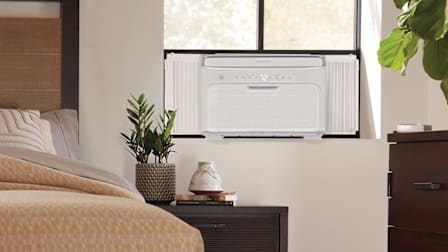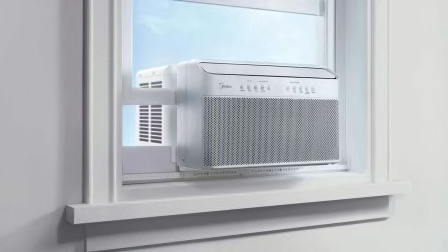How to Install a Window Air Conditioner
A bad installation can damage your AC or, worse, cause the unit to fall out of your window
When you shop through retailer links on our site, we may earn affiliate commissions. 100% of the fees we collect are used to support our nonprofit mission. Learn more.

When it’s hot enough to need an air conditioner, installing one can be a chore, tempting you to cut corners. Please don’t. A poorly installed AC is at best noisy and inefficient and at its worst it can be downright dangerous.
To help you get the job done right, we asked CR’s resident air conditioner expert, Chris Regan, to walk us through the proper steps. He’s been installing ACs for years in CR’s air conditioner test chamber.
If you’re installing a new AC, start at Step 1. If you’re re-installing a unit from seasons past, skip ahead to Step 3.
Steps for Installing a Window AC
Step 1: Read the Instructions
While Chris Regan’s guidelines provide a great primer, your air conditioner likely has specific installation requirements covered in the documentation. And there’s no shame in consulting the paperwork; even our experts do it. “Do as we do and always follow the manufacturer’s installation instructions, using the hardware that comes with the AC,” Regan says. This is especially important if you’ve bought one of the innovative U-shaped models, where the installation is less conventional.
Step 2: Make Sure It Works
When you unbox your AC, be sure to remove all the packaging: foam blocks, tape, and plastic fasteners. You don’t want to get the unit in the window only to realize you’ve still got a piece of tape over the vents. Be careful while unboxing the thing, too. “The backside of the unit has very thin metal cooling fins that can easily slice fingers,” Regan says. Before hoisting the AC into the window, place it on the floor, plug it in, and turn it on to confirm that it works. You don’t want to install the unit only to find out that it’s deader than disco.
Step 3: Attach the Side Panels
Unplug the AC and attach the two accordionlike side extensions. (These expand so you can close up the spaces on each side of the unit once it’s in the window and keep the cool air inside and the hot air outside.) Most models also come with a metal rail that screws to the top of the unit. This acts as a track for the side panels and the window sash and helps hold the AC in the window.
Best Window ACs From CR's Tests
Which ACs are great at keeping you cool all summer long? Check out the top performers from our extensive lab tests, organized by the room size you want to cool. In general, you’ll want a model with good scores for comfort and noise. You might also consider how well each unit performs under brownout conditions when extreme heat causes power fluctuations.
































